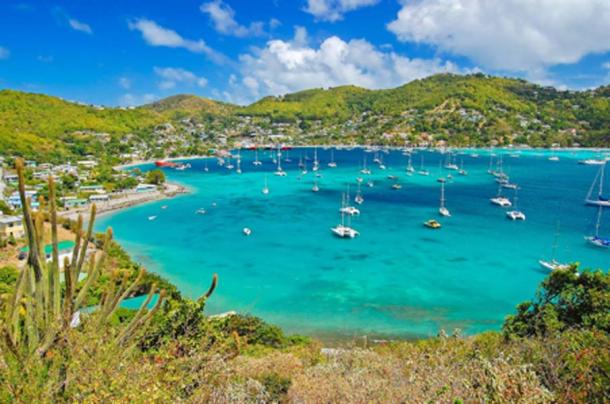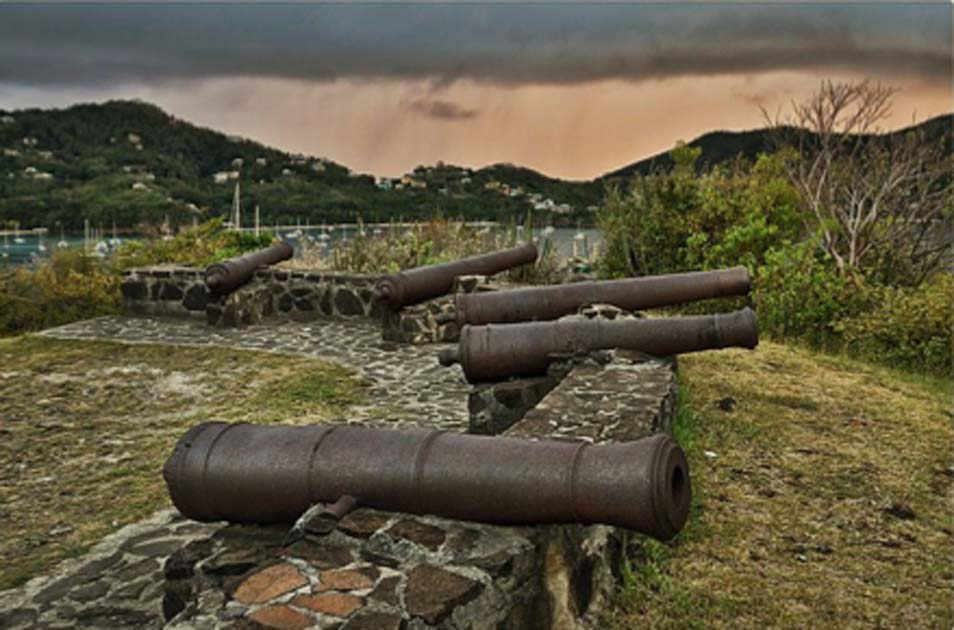Fort Hamilton: Black Caribs vs The British on Strategically Important Island in the Caribbean
St Vincent and the Grenadines are a group of 32 small island with a long history. The main island of Saint Vincent is the sovereign state and was named by Christopher Columbus in 1498. One of its most important historic sites is that of Fort Hamilton found on the second largest of the Grenadine islands, Bequia. This fort, located in the midst of some stunning scenery, was of great strategic importance in the 18 th century and is now a national landmark in St Vincent and the Grenadines.
The History of Fort Hamilton, St Vincent and the Grenadines
The first Europeans to colonize the islands were the French, despite being ‘discovered’ by the Spanish. The interior of the island, however, was still controlled by a group known as the Black Caribs, descendants of escaped African slaves and local Amerindian Caribs.

Depiction of treaty negotiations between Black Caribs and British authorities on the Caribbean island of Saint Vincent, 1773. (Public Domain)
During the many conflicts between the French and the British in the 18 th century, the island, as was the case with so many in the region, changed hands numerous times. It was only in the 1760s that the British finally gained control of the islands after their victory in the Seven Years War. They built Fort Hamilton during the 1770s and it overlooks Admiralty Bay, one of the Royal Navy’s most important bases in the Caribbean.
- Port Royal and the Real Pirates of the Caribbean
- The Intricate World of Pirates, Privateers, Buccaneers, and Corsairs
- Fort Shirley, Where A Mutiny Led to Emancipation of the British Slave Soldiers

The location of St Vincent and the Grenadines (Google Maps)
In the 1790s, the French supported the Black Caribs in a revolt against British rule. Fort Hamilton was central to the defense of the island and the suppression of the revolt. The French were unable to give active support to the Black Caribs because of the guns of Fort Hamilton. They prevented warships from supplying the rebels which allowed the British to regain control over the island by 1797.
After the end of the Napoleonic Wars, Fort Hamilton was no longer of strategic importance. Maintained by a local militia in the 19 th century, much of its was demolished in the early 20 th century. Today the fort is maintained by St Vincent and Grenadines National Parks, Rivers and Beaches Authority.
The Remains of Fort Hamilton
Fort Hamilton is located near Port Elizabeth, the main city on an island with a population of just over 5000 people. Once much more extensive, it had many buildings, including a magazine. Sadly, very little remains since all that is left of Fort Hamilton is a platform with three 24-pounder guns that date from the early 19 th century.
The guns are in excellent condition and are set upon stone placements and fronted by a three-foot-high wall. They were specially designed for coastal batteries and one was powerful enough to smash the hull of an enemy warship. According to legend, the cannons missed a French ship and hit a headland, dividing it into two reefs, known today to locals as the East and West Cay.
The Origin of the Name
The fort is named after one of the most important, and indeed controversial, Founding Fathers of the United States, Alexander Hamilton. He has recently been the subject of a successful Broadway show that won critical acclaim.
Born and raised in the Bahamas, he never set foot or lived on the island, although his father, a Scottish settler, did. He was given a grant of land by the British government as part of their drive to colonize the Caribbean and owned a farm not far from the site of the fortress. He later moved to the Bahamas where the future Founding Father was born, before he emigrated to the American colonies.
Visiting Fort Hamilton
The ruins are located not far from Port Elizabeth and it may be possible to hire a taxi to the national monument. The fort is on top of a steep hill about 300 feet (100m) above sea level. For those who prefer to go on foot, there is an excellent pathway up to the site and a gazebo at the ruins awaits those who need a rest after the climb.

View of Admiralty bay Hamilton Fort on Bequia Island (pkazmierczak/ Adobe Stock)
Open all year round and with is no admission fee, visitor can walk around the area and enjoy the extensive views from the old battery.
Top image: Fort Hamilton, Bequia Source: Photo by rdtoward21
By Ed Whelan
References
Chernow, R. (2016). Alexander Hamilton. Head of Zeus Ltd
Sheridan, R. B. (1994). Sugar and slavery: An economic history of the British West Indies, 1623-1775. University of West Indies Press
Smith, R. A. J., & Rhiney, K. (2016). Climate (in) justice, vulnerability and livelihoods in the Caribbean: The case of the indigenous Caribs in northeastern St. Vincent. Geoforum, 73, 22-31
Available at: https://www.sciencedirect.com/science/article/pii/S0016718515002997



















